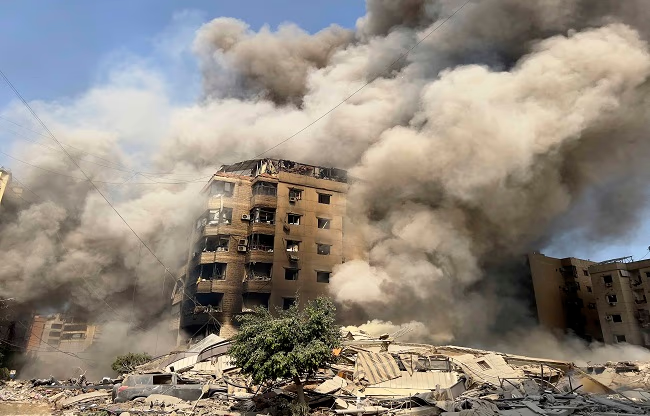Lebanon, once a stronghold for extremist groups such as Hezbollah, used to be a Christian-majority country until a few decades ago. The Lebanese parliament even reserved about 60% of its seats for Christian leaders. However, significant changes over the years have led to Muslims becoming the majority, turning Lebanon into an Islamic nation. Here’s an overview of what changed in just a few years.
Lebanon recently experienced turmoil due to Israeli strikes that killed several high-ranking leaders of Hezbollah, including its commander Nasrallah. This incident has caused widespread devastation throughout the country. Lebanon, which has become a homeland for radical Islamic factions, was known for its extremism and animosity toward Jews and Christians. Yet, around fifty years ago, it was a predominantly Christian nation with Muslims making up less than 30% of the population.
Last week, Israeli strikes resulted in the deaths of Hezbollah's chief Hassan Nasrallah and several other leaders. Hezbollah, an extremist group with substantial influence in both parliament and the government, has been aggressively targeting Israel over the Palestinian issue. The conflict escalated recently due to Hamas's attacks on Israel. Seizing this opportunity, Hezbollah also launched attacks on Israel, heightening the prospects of war in the entire Middle East. Notably, Lebanon, the headquarters of Hezbollah, was once a Christian-majority country like much of the Middle East.

Source: aajtak
In the 1950s, about 70% of Lebanon's population was Christian, while Muslims and other religions comprised the remaining 30%. The last official census was in 1932, and there hasn't been one since then. According to a report by the US State Department, around 70% of Lebanon's current population is Muslim, including Shia, Sunni, and others. The rest are Christians and diverse groups.
Until the 1970s, Lebanon was the only non-Muslim country in the Middle East, alongside Israel being predominantly Jewish. Beirut, its capital, was often called the 'Paris of the East' as it linked Europe, Asia, and Africa for trade, making it economically significant. Traders from different backgrounds practiced their faith without hesitation here.
Nearly 60% of the key positions were held by Christians, leading to increasing dissatisfaction among the Muslim population, who sought equal representation. Several incidents followed, such as religious conversions among Christians living in Muslim-majority areas. Reports from the University of Oxford highlight that reverting to one's original faith was difficult after converting, often resulting in severe blasphemy charges for groups attempting to do so. This exacerbated tensions between the communities.

Source: aajtak
The early 20th century saw significant changes in Lebanon's religious balance, influenced by various events. Among them was the Lebanese Civil War, one of the bloodiest conflicts in the Middle East, where Christians and Muslims fought intensely. Political factions tied to religious groups also joined the conflict, which lasted from the 1970s to the 1990s.
During this period, the Christian population realized their vulnerability for the first time as large numbers of Palestinian refugees, who also opposed Christians, settled in Lebanon. Many attributed the war partly to these refugees, who supported an independent Palestine agenda and frequently provoked Israel. In response, the Israeli military often attacked Lebanon, and the Christian Lebanese got caught in the crossfire, further widening the communal rift.
Although primarily a domestic conflict, neighboring countries intervened. Syria and Iraq supported Muslim factions, while Israel backed the Christian groups. Several extremist organizations emerged during this period, including Hezbollah, Amal, and the Muslim Socialist Party. The war finally ended with the Taif Agreement.

Source: aajtak
The Taif Agreement, reached in the early 1990s, involved Lebanon's various religious and political factions. It provided for equal power-sharing within the government, reserving the presidency for Christians and the prime minister's position for Sunni Muslims. Even parliamentary seats were divided based on religious lines.
The religious landscape of Lebanon began to change noticeably afterward. Many Christians, escaping the civil war and its aftermath, migrated to Western countries. This exodus continued even after the war. Simultaneously, Muslim refugees from Palestine, Syria, and Jordan began settling in Lebanon, aided by the political structure. This led to a swift change in the country's religious orientation, with Muslims constituting the majority and wielding significant political power.
Looking at the broader Middle East, many regions were once predominantly Christian. According to the Jerusalem and Middle East Church Association, Christianity spread from Jerusalem to Syria, Jordan, Egypt, and other areas before the fourth century. Religious conflicts among major religious authorities and divisions within churches altered the situation. The arrival of Muslim traders in the seventh century further widened this divide.




